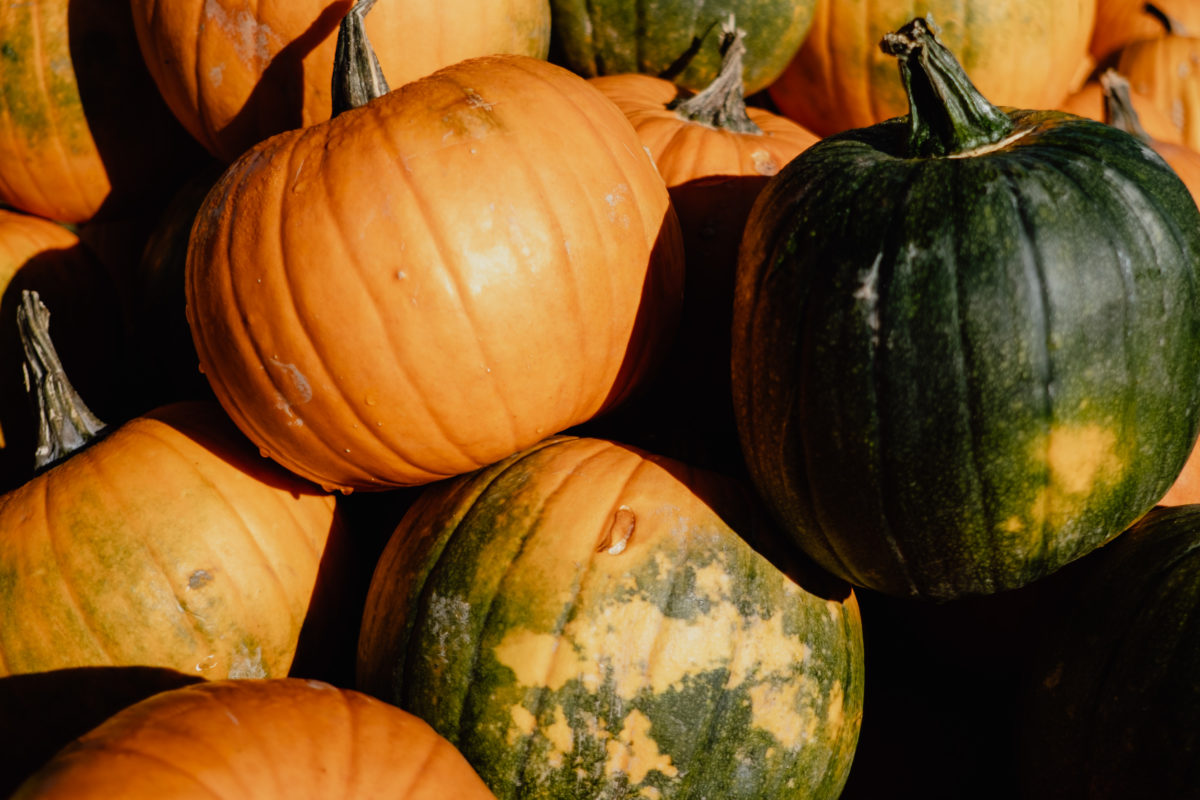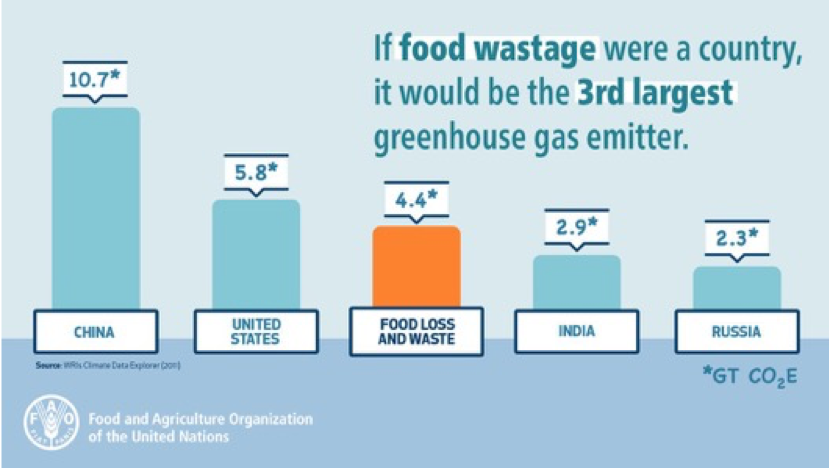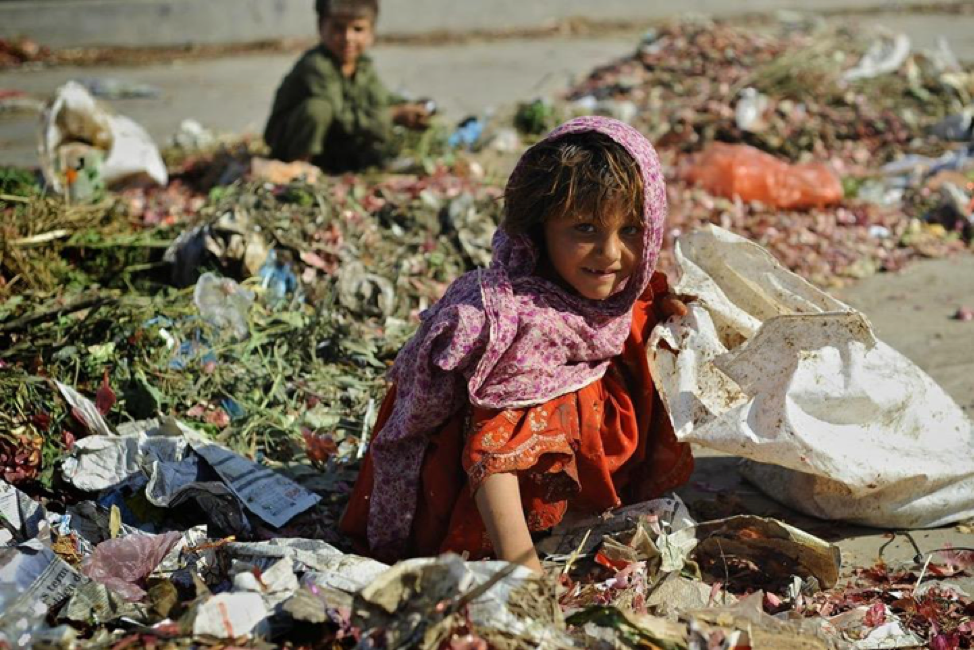Our Food Waste Affects the Food System
Kamrun Nahar, Research Bioscientist
In our modern lifestyles, it is safe to say very little thought is put into where our food waste goes, what happens as it disintegrates and how that affects the planet.
After all, quite a lot of it is organic waste and ‘it will just rot away somewhere’, right? Wrong. We, humans, knowingly or unknowingly are one of the main culprits of food scarcity, malnutrition, and also indirectly increasing damage to the planet.

Impact 1# Throwing away ‘ugly’ food
About one-third of the food produced globally is wasted or disposed, accounting for about 1.3 billion tonnes of food waste2. Some of these produces are thrown away even before they are processed to be sold in supermarkets and restaurants, as they are considered “ugly” and unattractive to consumers.
In 2017, a published report stated that the sales of these “ugly” vegetables have grown in recent years but there is still a huge percentage of food wasted based on cosmetic grounds alone3.
Impact 2# Rotting in poor storage conditions
After we throw away one-third of the food produced due to cosmetic reasons, consumer-approved food is not stored properly. In India, about twenty-one million metric tonnes of wheat is left to rot away every year as they are not stored in proper conditions4.
Impact 3# Wasting water to grow uneaten food
The major user of global freshwater is agriculture. To support additional food production, a greater water supply is also required to provide sufficient nutrients for the growth of these foods. Dr Charlotte de Fraiture, a researcher from the International Water Management Institute, mentioned that about half of the water used to grow food globally is either lost or wasted5.
Therefore, increasing food waste equates to increasing water waste. For example, India is expected to use more than 230 cubic kilometres of freshwater yearly, according to the United Nations, and this itself is enough to supply drinking water to 100 million people in a year4.

Impact 4# Disintegrating food creates greenhouse gases
In the landfills, food waste disintegrates and produces methane gas in exchange, one of the most harmful greenhouse gases driving climate change.
We could reduce about 11% of all greenhouse gas emissions, that solely comes from the food system, just by reducing our food wastage6. Also, about 9% of the greenhouse gases come from agriculture7 and therefore, more food production also means more greenhouse gases produced, regardless of food wastage.
Impact 5# Raising meat for consumption
Raising and feeding cattle, goat and sheep also result in more methane production. Having a vegetarian diet reduces one’s carbon footprint greatly but shifting to less carbon-intensive meats can also have a tremendous impact.
Let’s say that you decided to switch to chicken consumption from beef for a year. This would reduce your yearly carbon footprint by 400 kilograms of carbon dioxide emissions7 .
Impact 6# Rising hunger
One in nine people in the world does not have access to food to lead a healthy life8. For example, in China, based on a 2017 report, roughly 135 million people are undernourished. From the total amount of food wasted solely in China, about 100 million people could be fed9.
According to the Brazilian Company of Agriculture Research, around forty thousand tonnes of food are disposed every day in Brazil, and this amount of food could feed 19 million people.
The World Economic Forum warns that a shortage of food could cause one of the largest risks to global stability over the next decade, together with climate change4.

International efforts
Many campaigns and awareness programmes operate in different parts of the world – though their success can only be determined by the people exposed to it. The SAVE FOOD initiative by the Food and Agriculture Organisation of the United Nations and Messe Düsseldorf GmbH was started to combat global food waste2.
The Scottish government has also launched a new advertising campaign, entitled Food Gone Bad, to help raise awareness of the impact food waste has on climate change and how to reduce it. Electrolux, a Swedish home appliance company, recently launched a campaign called the Social Food Swap where employees are encouraged to exchange food items in the office.
The National Environment Agency of Singapore, NEA, has also launched a campaign to motivate consumers to “order only what they can finish, ask for less rice and noodles and say no to side dishes that they will not consume” in restaurants12. This helps to build a better habit for consumers to start wasting less food when they eat out.
What can you do as an individual?
- Make conscious choices. You can reduce waste in your fridge, by buying food more carefully. Try shopping lists, meal planning and trying new recipes to finish the food in your fridge.
- Ugly Fruits and Vegetables are totally fine! Plus, they are often cheaper too.
- Pack take-home containers for parties. We all have those party events where we order too much food just so that there will be more than enough for everyone. This is where we can contribute by repacking the leftover food and giving them out to the guests to bring home and this could save them from preparing another day’s meal, wasting more ingredients.
- Share extra food. Mobile applications, such as OLIO, which enables participants to share their food items with people around their neighbourhood. These shared food items may be those that may not be consumed and end up being thrown away, or even fresh produce from one’s garden.
All in all, every human being has the power to protect the Earth. Let’s do it together!
How about starting with your very own reduce food waste challenge? These two roommates gave it their best try! Watch here.
REFERENCES
- Elferink, M. and Schierhorn, F. Global Demand for Food Is Rising. Can We Meet It? Harvard Business Review. April 2016. Retrieved from: https://hbr.org/2016/04/global-demand-for-food-is-rising-can-we-meet-it
- Food and Agriculture Organization of the United Nations (FAO). SAVE FOOD: Global Initiative on Food Loss and Waste Reduction. 2019. Retrieved from: http://www.fao.org/save-food/resources/keyfindings/en/
- Dobson, M. C. and Edmondson, J. Ugly veg: supermarkets aren’t the biggest food wasters – you are. March 2019. Retrieved from: http://theconversation.com/ugly-veg-supermarkets-arent-the-biggest-food-wasters-you-are-111398
- Qazi, M. India’s failed food system. The Asian Age. December 2017. Retrieved from: https://www.asianage.com/india/all-india/271217/indias-failed-food-system.html
- Choo, R. Wasting Food = Wasting Water. Earth Institute, Columbia University. 2011. Retrieved from: https://blogs.ei.columbia.edu/2011/07/01/wasting-food-wasting-water/
- World Wildlife Fund (WWF). Fight climate change by preventing food waste. 2019. Retrieved from: https://www.worldwildlife.org/stories/fight-climate-change-by-preventing-food-waste
- United States Environmental Protection Agency. Sources of Greenhouse Gas Emissions. 2019. Retrieved from: https://www.epa.gov/ghgemissions/sources-greenhouse-gas-emissions
- World Food Programme. Zero Hunger. 2018. Retrieved from: https://www1.wfp.org/zero-hunger
- Wan, L. China wastes enough food to feed 100 million people. William Reed Business Media Ltd. 2017. Retrieved from: https://www.foodnavigator-asia.com/Article/2017/11/16/China-wastes-enough-food-to-feed-100-million-p…
- The Brazil Business. Food Waste Sector in Brazil. 2019. Retrieved from: https://thebrazilbusiness.com/article/food-waste-sector-in-brazil
- BBC News. Scotland’s food waste causing more greenhouse gas than plastic. May 2019. Retrieved from: https://www.bbc.com/news/uk-scotland-48257019
- Lim, S. 85% of Singapore residents eat out every week – and rice and noodles are the most commonly wasted food items while doing so, NEA says. Business Insider Singapore. 2019. Retrieved from: https://www.businessinsider.sg/85-of-singapore-residents-eat-out-every-week-and-rice-and-noodles-are…